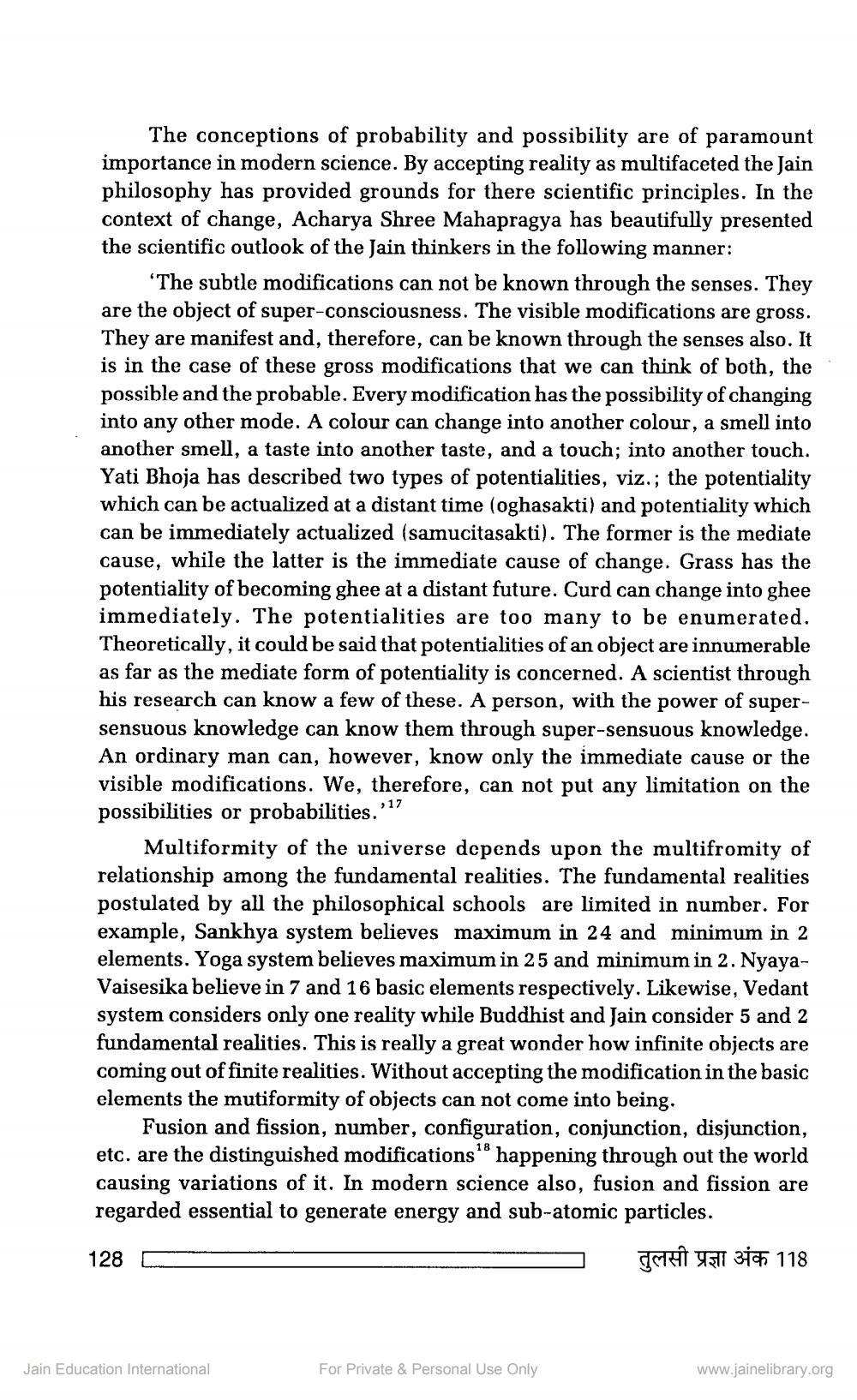________________
The conceptions of probability and possibility are of paramount importance in modern science. By accepting reality as multifaceted the Jain philosophy has provided grounds for there scientific principles. In the context of change, Acharya Shree Mahapragya has beautifully presented the scientific outlook of the Jain thinkers in the following manner:
"The subtle modifications can not be known through the senses. They are the object of super-consciousness. The visible modifications are gross. They are manifest and, therefore, can be known through the senses also. It is in the case of these gross modifications that we can think of both, the possible and the probable. Every modification has the possibility of changing into any other mode. A colour can change into another colour, a smell into another smell, a taste into another taste, and a touch; into another touch. Yati Bhoja has described two types of potentialities, viz.; the potentiality which can be actualized at a distant time (oghasakti) and potentiality which can be immediately actualized (samucitasakti). The former is the mediate cause, while the latter is the immediate cause of change. Grass has the potentiality of becoming ghee at a distant future. Curd can change into ghee immediately. The potentialities are too many to be enumerated. Theoretically, it could be said that potentialities of an object are innumerable as far as the mediate form of potentiality is concerned. A scientist through his research can know a few of these. A person, with the power of supersensuous knowledge can know them through super-sensuous knowledge. An ordinary man can, however, know only the immediate cause or the visible modifications. We, therefore, can not put any limitation on the possibilities or probabilities.'1?
Multiformity of the universe depends upon the multifromity of relationship among the fundamental realities. The fundamental realities postulated by all the philosophical schools are limited in number. For example, Sankhya system believes maximum in 24 and minimum in 2 elements. Yoga system believes maximum in 25 and minimum in 2. NyayaVaisesika believe in 7 and 16 basic elements respectively. Likewise, Vedant system considers only one reality while Buddhist and Jain consider 5 and 2 fundamental realities. This is really a great wonder how infinite objects are coming out of finite realities. Without accepting the modification in the basic elements the mutiformity of objects can not come into being.
Fusion and fission, number, configuration, conjunction, disjunction, etc. are the distinguished modifications happening through out the world causing variations of it. In modern science also, fusion and fission are regarded essential to generate energy and sub-atomic particles. 128 cm
-
AR 310 118
Jain Education International
For Private & Personal Use Only
www.jainelibrary.org




